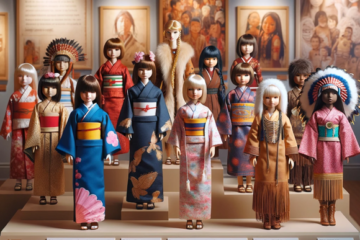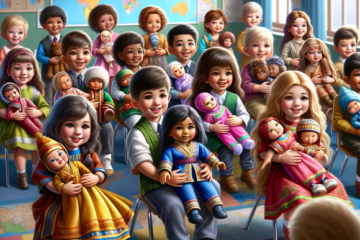In a world where marketing permeates every aspect of our lives, its influence on our perception of beauty cannot be overstated. Nowhere is this more evident than in the realm of doll marketing, where pristine images of perfection are meticulously crafted to captivate young minds. But behind the glossy facade lies a complex relationship between marketing strategies and the perpetuation of unrealistic beauty standards.
From Barbie to Bratz, dolls have long been marketed as the epitome of beauty and femininity. With their flawless features and proportionate bodies, these dolls set an unrealistic standard that many young girls aspire to emulate. The incessant bombardment of these images through advertisements, packaging, and media only serves to reinforce these ideals, creating a vicious cycle of unattainable beauty.
But the impact of doll marketing extends beyond mere aesthetics; it infiltrates the very psyche of young girls, shaping their self-image and sense of worth. Studies have shown that exposure to idealized images of beauty at a young age can lead to body dissatisfaction, low self-esteem, and even disordered eating patterns. By promoting a narrow definition of beauty, doll marketing not only limits the diversity of representation but also perpetuates harmful stereotypes about gender roles and identity.
However, amidst the sea of manufactured perfection, there lies a glimmer of hope. In recent years, there has been a growing movement towards inclusivity and diversity in doll marketing. Companies like Mattel have introduced dolls with a range of body types, skin tones, and disabilities, reflecting a more realistic and inclusive portrayal of beauty. These efforts not only challenge conventional beauty standards but also empower young girls to embrace their uniqueness and individuality.
Yet, the journey towards redefining beauty in doll marketing is far from over. It requires a concerted effort from all stakeholders – parents, educators, and policymakers – to dismantle the entrenched norms that have long dictated our perception of beauty. By fostering critical thinking skills and promoting media literacy, we can empower young girls to deconstruct the images they see and cultivate a more nuanced understanding of beauty that extends beyond physical appearance.
In the end, the relationship between doll marketing and beauty standards is a deeply human one, rooted in our innate desire for acceptance and belonging. As we navigate the complex terrain of marketing and media, let us remember that beauty comes in all shapes, sizes, and colors. It is not something to be commodified or standardized but rather celebrated in its diversity and complexity. Only then can we truly liberate ourselves from the confines of unrealistic beauty standards and embrace the beauty that lies within each and every one of us.



0 Comments